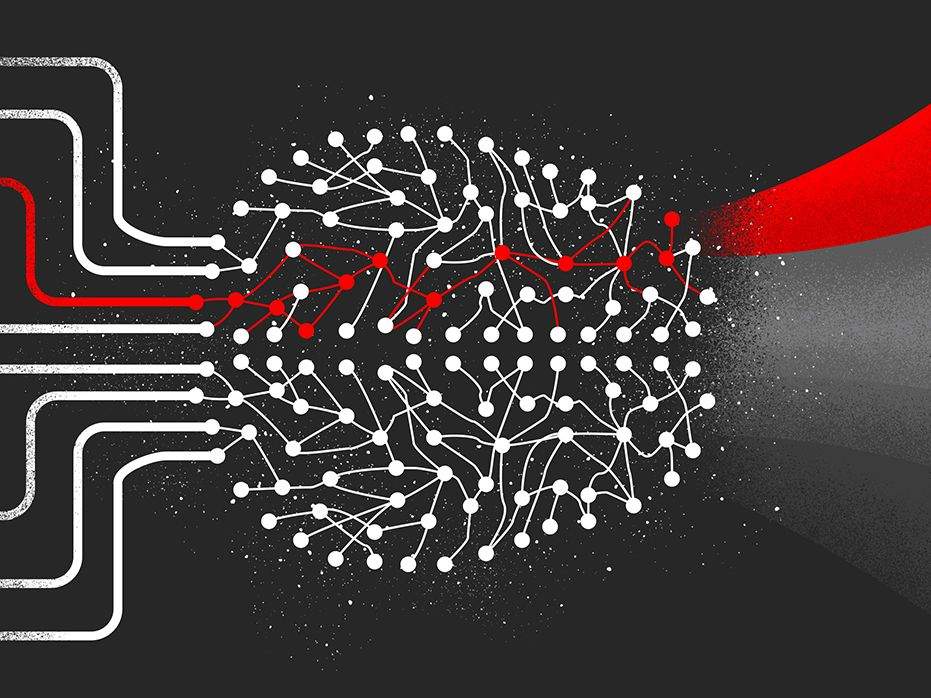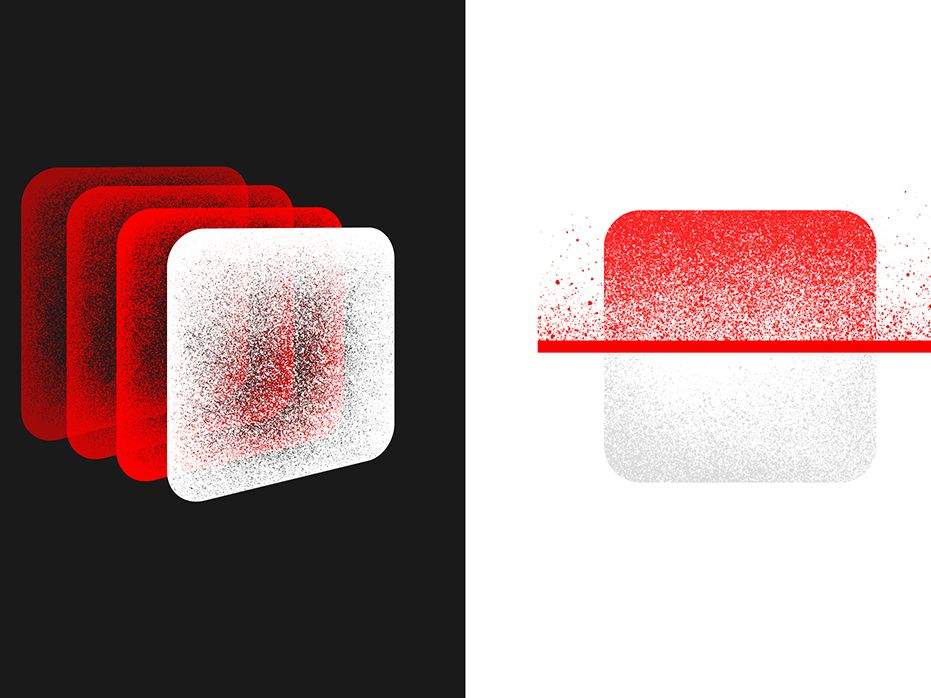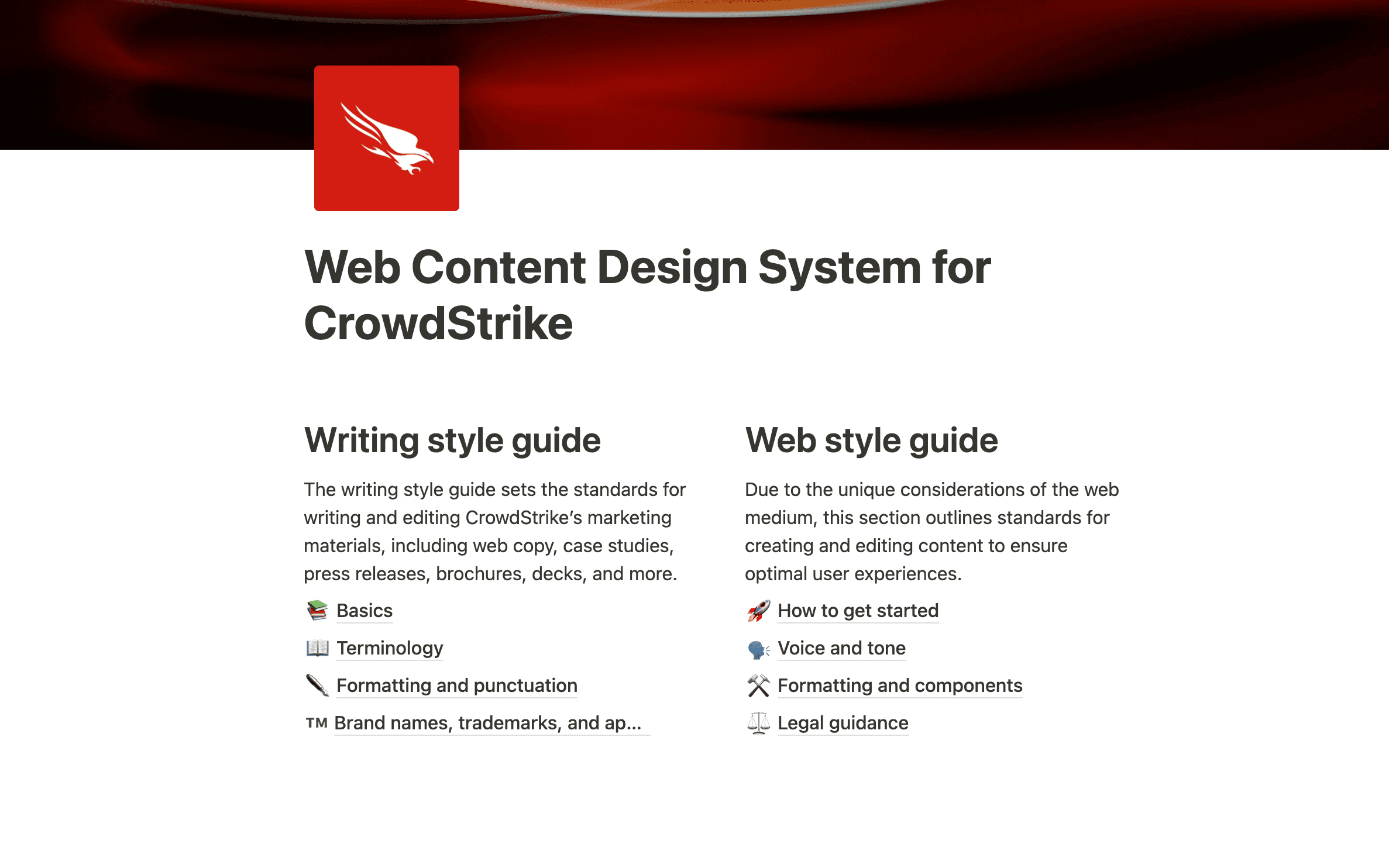Web Content Design System for CrowdStrike
Crafting a consistent and user-centered web experience
The challenge
Inconsistencies in CrowdStrike's web content created a diluted brand messaging, delivering a disjointed user experience.
The goal
Create a digital resource that ensures consistent, high-quality, on-brand, and user-friendly web content across CrowdStrike's website.
The audience
Stakeholders and internal content practitioners building pages for CrowdStrike’s website.
Process
01 — Research
My team and I conducted a comprehensive content audit of CrowdStrike's existing web properties and internal resources.
02 — Ideation
Based on our findings we decided to develop a web content design system that amplifies CrowdStrike’s brand persona.
03 — Design
We incorporated our Writing Style Guide with a Web Style Guide, enabling consistent content across reusable components.
04 — Testing
Ensuring stakeholder alignment, my team and I facilitated internal reviews and discussions to gather feedback.
Solution
My team and I delivered a Web Content Design System that prioritizes clear, concise, and action-oriented content, improving readability, scannability, and the overall user experience on CrowdStrike's web properties.
Results
Better brand consistency
The system ensures a unified voice across all web properties, fostering brand recognition and trust.
Streamlined workflow
Clear guidelines and reusable content modules expedite content production and reduce reliance on individual approvals, allowing internal teams to work more efficiently.
Reduced content errors
Established standards minimize inconsistencies in grammar, style, and formatting, creating a more polished and professional online presence.
Improved accessibility
Web-specific guidelines ensure content is accessible to users with disabilities, demonstrating CrowdStrike's commitment to inclusivity.
Reflection
Challenges
Stakeholder buy-in: Gaining adoption of the new system required overcoming resistance to change from different departments. This was a major hurdle, as a few key stakeholders were reluctant to adopt the system. To address this challenge, my team conducted extensive stakeholder engagement, including one-on-one meetings, and presentations.
Balancing flexibility and control: Creating a system with sufficient structure for consistency, while leaving allowance for innovation as product marketing needs evolve, was a delicate balancing act. On the one hand, the team needed to ensure that the system was robust and scalable, with clear rules and guidelines. On the other hand, they also needed to allow for some flexibility, so that content creators could adapt the system to meet the specific needs of their projects. To strike this balance, the team developed a set of core principles that guided the design of the system. They also created a process for reviewing and approving new content types and components, to ensure that they were aligned with the overall system.
Maintenance and governance: Establishing a clear process for updating the system, managing version control, and training new content practitioners on how to use it effectively was a key challenge. The team needed to ensure that the system was kept up-to-date with the latest changes in product marketing, and that new users were able to quickly and easily learn how to use it. To address this, the team developed a comprehensive maintenance and governance plan. They also created a user guide and training materials to help new users get started.
Lessons learned
The importance of collaboration: The success of the content design system hinged on stakeholder feedback. This demonstrated the value of a cross-functional approach. The team learned that it is essential to involve stakeholders from all levels of the organization in the design process. This helps to ensure that the system meets the needs of everyone who will be using it.
Iterative process: Building a comprehensive content design system requires time and refinement. The team learned that it is important to be prepared to make updates and modifications based on how the system performs in practice. This iterative approach allowed the team to identify and address any issues early on..
The power of documentation: A well-documented content design system will serve as a lasting resource and a tool for onboarding new staff members, ensuring long-term success.





